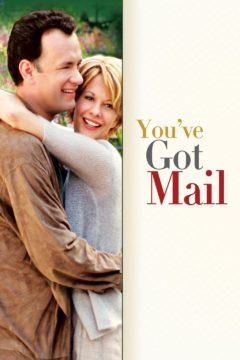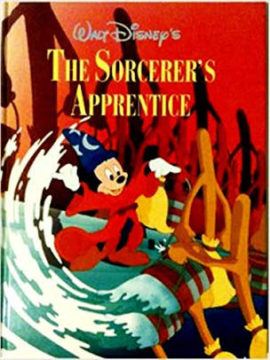by Carol A Westbrook

There was a time when getting an email was a rare event, a special event. Remember the 1998 film, “You’ve got mail,” in which Meg Ryan meets Tom Hanks in an online chatroom? Not recognizing that they are business rivals, they eventually fall in love, in what is perhaps the first online romance. Email was still a novelty in 1998, since mail programs had only been around for a couple of years, and the world wide web itself had only been available for 6 years.
That was then. Now, there are over 200 unsolicited emails coming into my mailboxes each day–so many that I can’t find the ones from my friends or colleagues amid the mess. And due to my junk mail filter–a necessity nowadays–I risk missing e-bills and important notices. Amid this mess, so many of my friends have just stopped using email that I can’t be sure that a message I send will be read. I have to reach them by other methods, sometimes text or Instant Message, an even old-fashioned phone call!
What happened to email? Spam happened.
Spam is not new. It’s been around since the days of ARPANET, the precursor to the modern internet. ARPANET was the Department of Defense’s linked computer network. In 1971, a computer scientist named Ray Tomlinson developed email for ARPANET, addressing the message as username@nameofcomputer. Seven years later the first spam email was sent by Gary Thurek, a marketing executive for the computer company Digital Equipment Corporation (DEC), advertising its new VAX system. In spite of the complaints, he sold $13 million dollars worth of the DEC machines!
When the world wide web went live in 1991, email was primarily used by university and corporate networks. I sent my first emails in 1992, through my university mail system. The general public saw it as a novelty and still too expensive for everyday use. By 1996, email programs were developed by Hotmail, with Mac and Microsoft introducing mail programs for their users soon thereafter. It was a fantastic new way for the average guy to communicate. Good-bye expensive long-distance calls or faxes, good-bye stamps and letters. Email was also an introduction to the wider world of the internet that could be accessed using a browser. People freely shared programs, code, and web sites. And most internet content was free.
Commercial interests and criminals both recognized that they had an inexpensive way to get their messages before the eyes of a large, gullible audience without much upfront cost. Unsolicited emails began to appear. They were an annoying nuisance, disliked by everyone, except the senders. If only a small percent of recipients open the email, and only a few more of those purchased the product or fell for the scheme, it is still enough to make a profit for the investment. All it takes is an email address and the purchase of a mailing list—this may be the business’s own customers (which they can then sell to another company).
Spam is an inexpensive, highly processed, canned meat product that has a shelf life of  forever. Initially developed to feed soldiers in World War II rations, it continued to be popular because it is a protein, meat produce that could feed a poor family for pennies. Spam is the butt of many jokes.
forever. Initially developed to feed soldiers in World War II rations, it continued to be popular because it is a protein, meat produce that could feed a poor family for pennies. Spam is the butt of many jokes.
How did bulk, unsolicited emails come to be named “spam,” after a generally disliked meat product? It’s a story, which begins with a comedy sketch on the Monty Python TV show. Monty Python was a silly British comedy show loved by academics and geeks alike. The “spam” sketch takes place in a restaurant that contained spam in every menu item.
In this comedy sketch, whenever the word “spam” was said in this restaurant, a chorus of Vikings in the background sang the word “SPAM” repeatedly, as you can see in this video: Monty Python Spam Sketch
Computer geeks of 1990’s apparently were Monty Python fans. They were also fans of virtual reality games like Dungeons and Dragons. These games were played on networked computer using text strings describing the action, since cartoon action video games were still a thing of the future. A programmer could annoy his fellow gamers by sending repetitive strings of words. “Spam” was an obvious popular choice, and Dungeons and Dragons games were often “spammed” this way. The word “spam” caught on, and it became synonymous with unwanted, unsolicited repetitive interruptions, a short leap to junk emails.
Spam emails are not illegal per se, but they can be used illegally. For example, emails that entice the reader to provide a social security number, password, or credit card information in exchange for big rewards are illegal. These scams are prosecuted when possible. Surely you must have been contacted by a Nigerian family asking your assistance in placing large sums of money into overseas bank accounts. It is gratifying to know that Edna Fielding, a woman from Olympia, Washington, was convicted and served 2 years in prison for her role in perpetrating this scheme, in collaboration with a Nigerian accomplice. It is hard to imagine that US citizens continue to fall for these emails, but the Nigerian scams persist.
Spam mails such as these are not only dangerous to the user, but they can be expensive and damaging to internet providers. A massive spam email attack in 200-2001 perpetrated by Khan C. Smith, from Tennessee on people who used Earthlink for their internet provider, stole passwords and created fake accounts, which then sent out even more spam emails. This barrage eventually used up to 12% of Earthlink’s email capacity. Earthlink sued Smith, and won a $25 million against him. Khan C. Smith is credited with founding the modern illegal spam industry.
 The most damaging spam are those which contain internet worms, that is, programs which reproduce themselves. You may remember the ILOVEYOU virus, a worm which only affected Microsoft Windows. If you opened the email and clicked on the attachment “LOVE-LETTER-FOR-YOU.txt.vbs, you allowed a virus into your computer that would randomly overwrite files and then send itself to all addresses in your Microsoft Outlook Address Book. The virus was launched on in May 2000, and within just ten days 50 million computers were infected, and as many as 10% of the computers in the world caught the Love Bug. The cost of this infection, and the eventual cost of removing it and recovering files from backup was estimated as being as high as $10 billion. The bug caused the Pentagon, the CIA and the IK Parliament to close down their email systems. The worm was created by a Philippine computer geek, Onel de Guzman, who was never prosecuted, as the Philippines did not have any laws against it. Guzman, only recently confessed to being the inventor of the ILOVEYOU worm in order to steal passwords to obtain free internet service. Now, 20 years later, he operates a small cell phone business in Manilla.
The most damaging spam are those which contain internet worms, that is, programs which reproduce themselves. You may remember the ILOVEYOU virus, a worm which only affected Microsoft Windows. If you opened the email and clicked on the attachment “LOVE-LETTER-FOR-YOU.txt.vbs, you allowed a virus into your computer that would randomly overwrite files and then send itself to all addresses in your Microsoft Outlook Address Book. The virus was launched on in May 2000, and within just ten days 50 million computers were infected, and as many as 10% of the computers in the world caught the Love Bug. The cost of this infection, and the eventual cost of removing it and recovering files from backup was estimated as being as high as $10 billion. The bug caused the Pentagon, the CIA and the IK Parliament to close down their email systems. The worm was created by a Philippine computer geek, Onel de Guzman, who was never prosecuted, as the Philippines did not have any laws against it. Guzman, only recently confessed to being the inventor of the ILOVEYOU worm in order to steal passwords to obtain free internet service. Now, 20 years later, he operates a small cell phone business in Manilla.
Interestingly, the first computer worm was created in 1988 by a Cornell University grad student, Tappan Morrison, who sent it using MIT”s servers. He did it just to see if it could be done. Not only could it be done, it was hard to stop once it took over. The worm self-replicated uncontrollably, like the Sorcerer’s apprentice! For his accidental creation, Morrison was convicted of a felony for which he served 3 years of probation and fines of $10,050. Morris would later become a tenured professor at MIT!
Not all spam is illegal. Many companies rely on emails to solicit business, and most marketing first offer this service. This type of spam is not illegal, so long as it follows the rules. The Federal Trade Commission, FTC, recognizes that commercial interests rely on it to sell their products. It remains economically viable to advertisers.
In 2003 Congress passed the CAN-SPAM act of 2003. CAN-Spam stands for “Controlling the Assault of Non-Solicited Pornography and Marketing, ” with the name itself implying that you CAN send out spam! This act sets out the rules by which commercial spammers must abide, for example, The message must be identified as an ad, and may not carry misleading or false information; the sender must include a valid physical address. Most importantly, recipients must have a way of opting out of messages, and this opt-out must be enacted within 10 days of a request. You can read about the rest of the premises of the CAN-SPAM Act in this link.
CAN-SPAM gave me a way to get rid of these annoying spam messages. There was no magic wand, no “do not call” list for unsolicited emails. I had to ask each sender, individually, to stop. This meant for each sender, I had to scroll down to the bottom of the email page they sent, to the fine print and look for the “unsubscribe” link.
I targeted recent spam emails are from online stores where I had shopped for Christmas presents, or from related stores who probably got my name from a list. For each sender, I opened the email and scrolled to the bottom. In extremely small print (7.5 pt) I found the words, “To unsusbscribe from future emails, click here.” I clicked each one, which took me to a confirmation site. It might be a single page with another click, or it might ask me to confirm. It was a tedious process. I’d unsubscribe a few each day, and my spam continued to decline.
I easily got rid of familiar retailers like Crate and Barrel, Walmart, and Home Depot. What I couldn’t get rid of were spam emails in other languages, especially Chinese. Sometimes I could find the “unsubscribe” link, usually it was a lost cause. Then there were those emails sent to one of my business accounts, claiming I had unpaid invoices and requesting my credit card or bank information for payment. Or they sent me an “invoice” to download, which undoubtedly contained a virus. These phishing emails were numerous, annoying, no doubt illegal, but easily recognized.
Briefly, I reached a point where I had no spam. I could finally enjoy my email. I got a few bills, and business emails. I didn’t get much from friends, who preferred texts or Instant Messenger.
This relative quiet did not last long. Soon, other retailers found me, as did the Chinese merchants. The phishing schemes continued unabated. I finally had to admit that I lost the spam battle. I had to accept that email was no longer a wonderful way to communicate. It had become another marketing tool, a way to get products before our eyes, like TV commercials, billboards or magazine ads. Might was well just sit back and enjoy it. And look, isn’t that a great sale on shoes?
